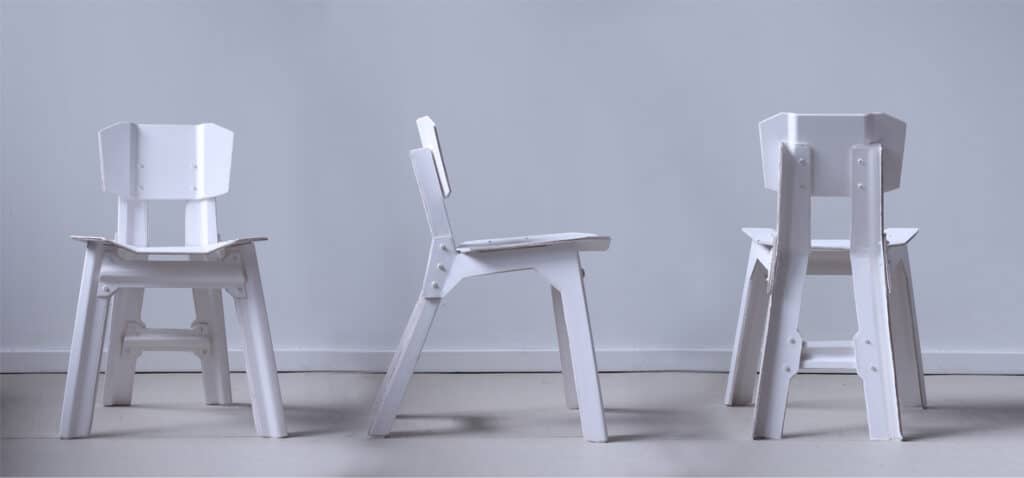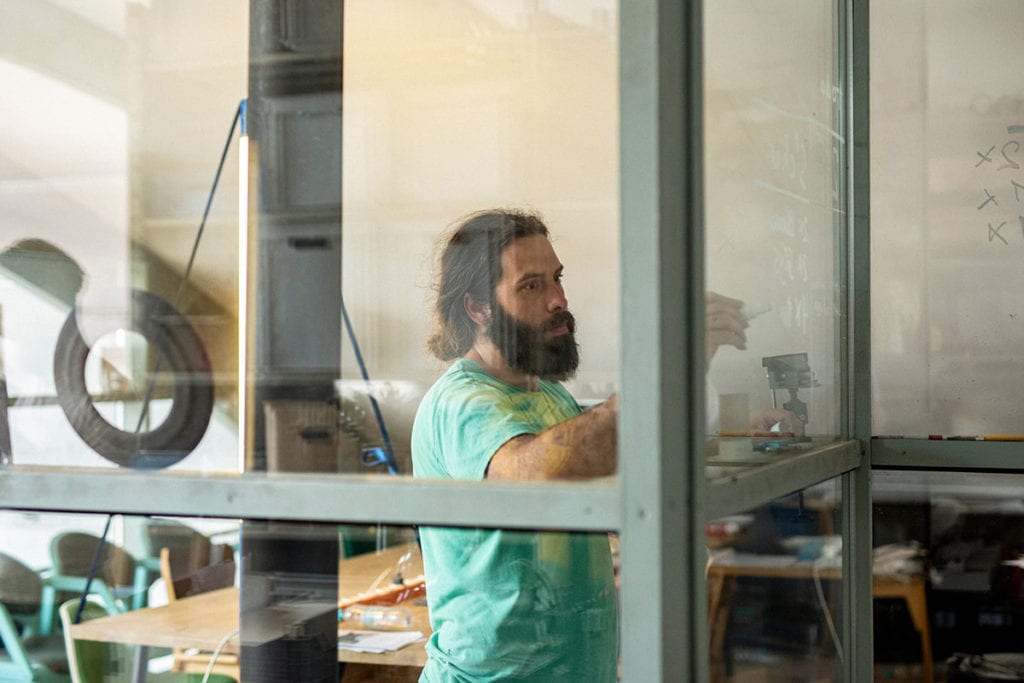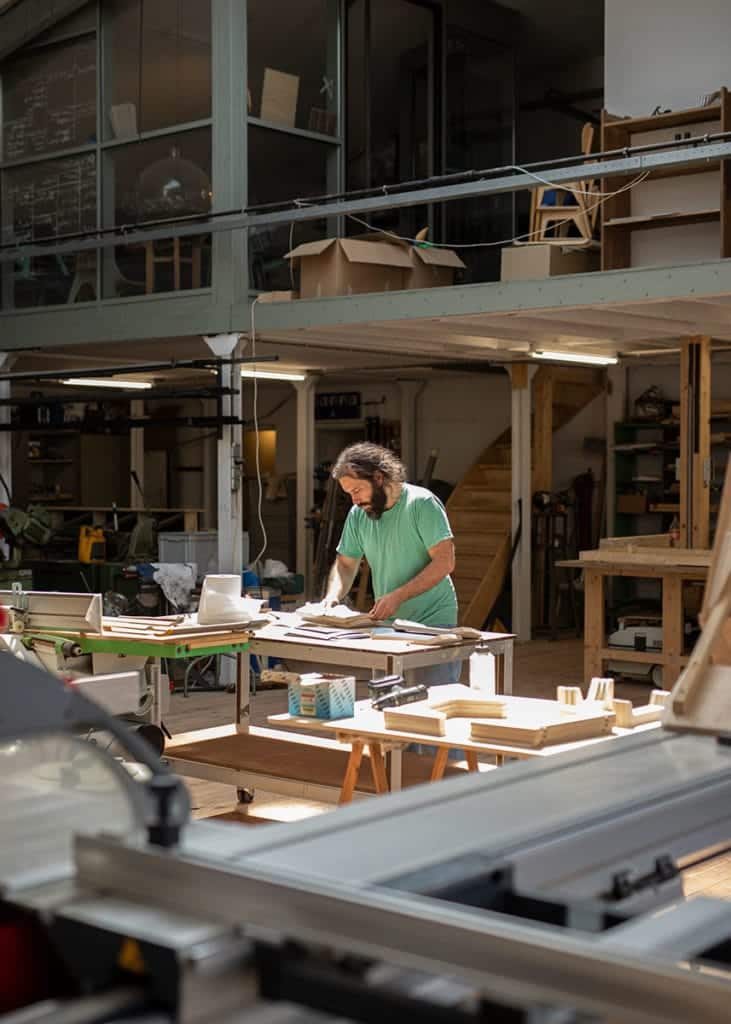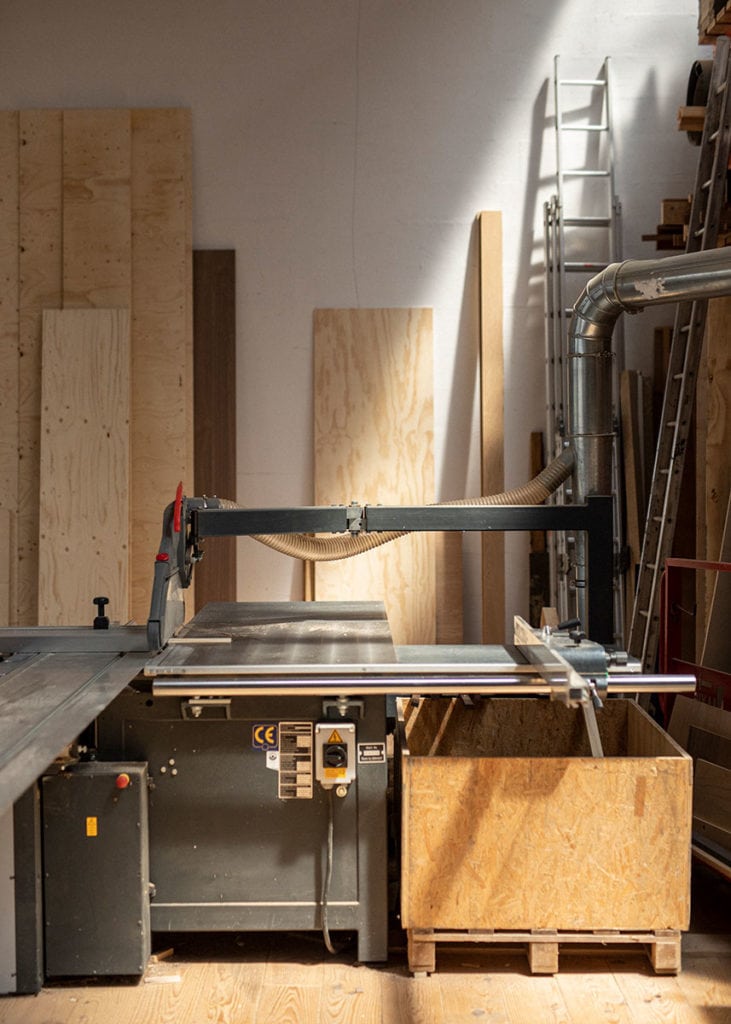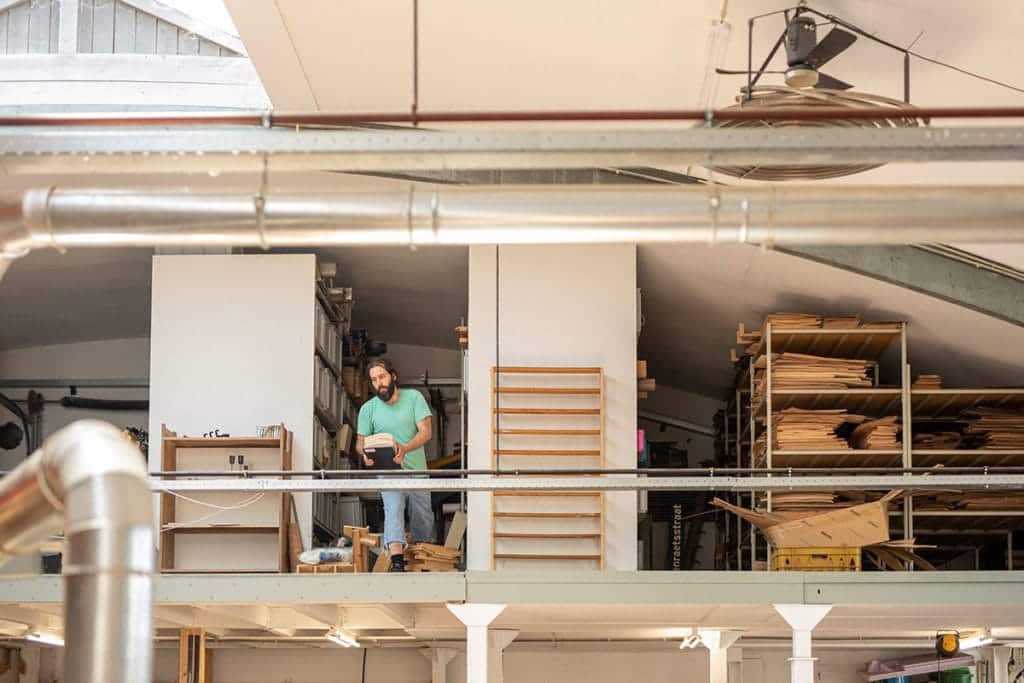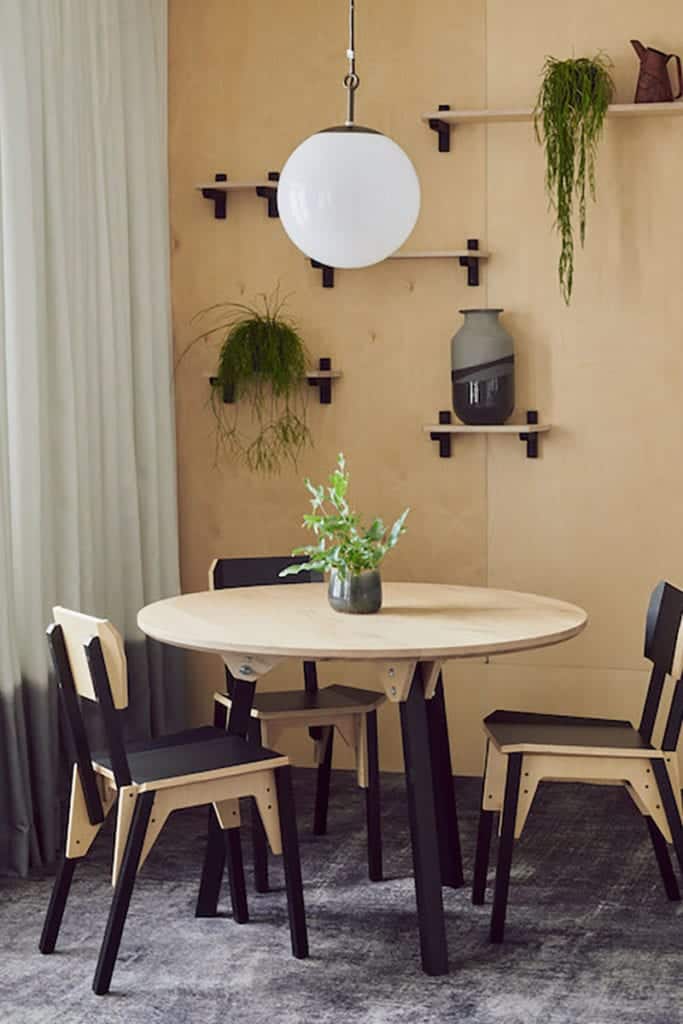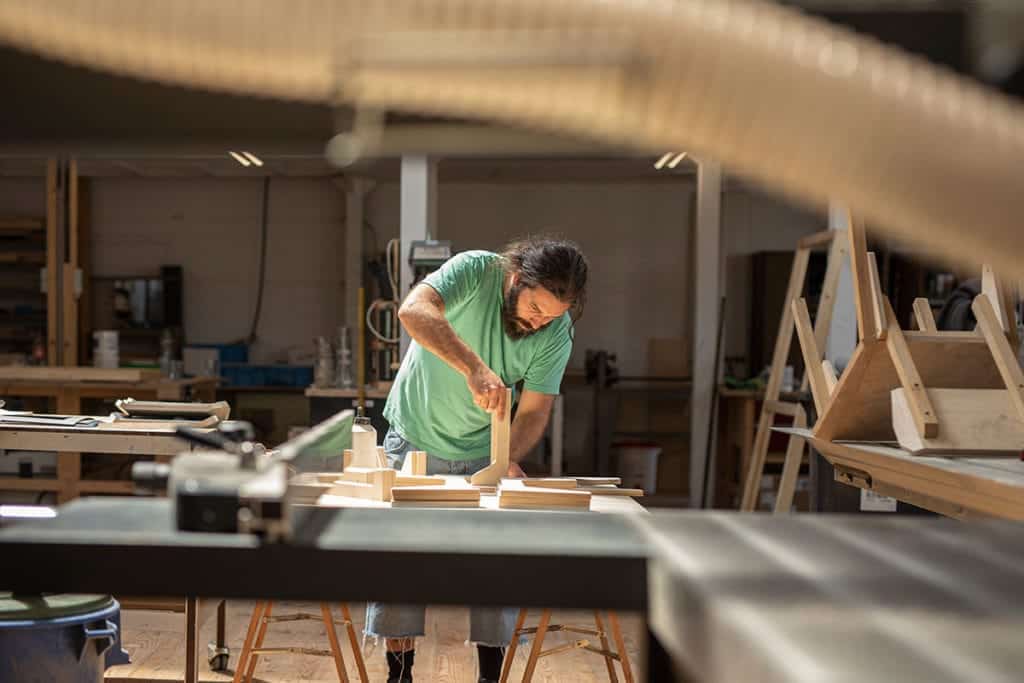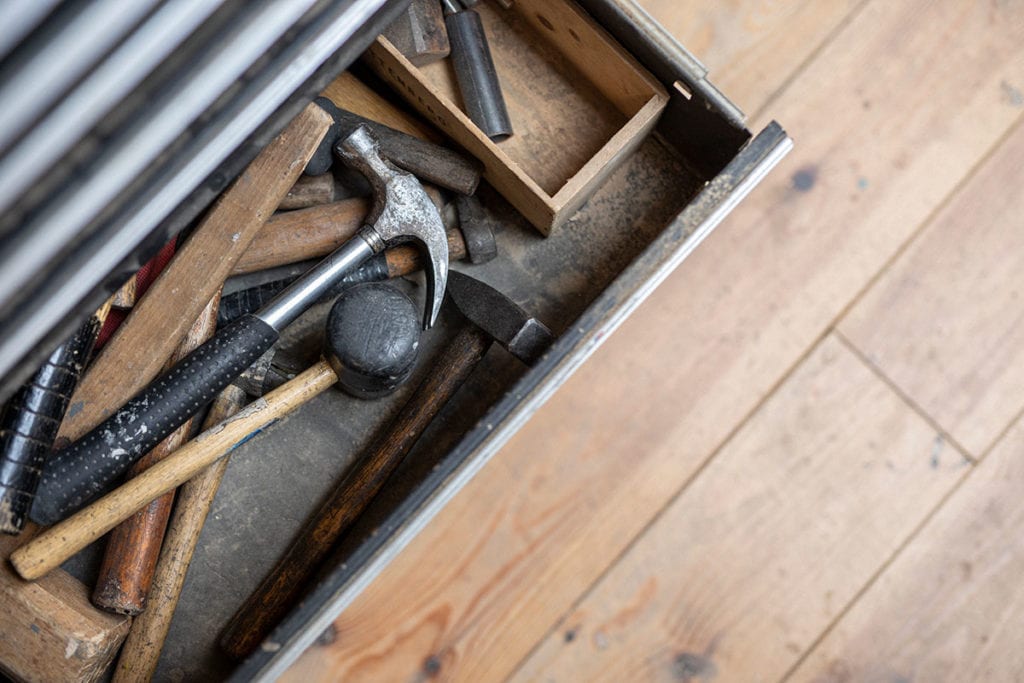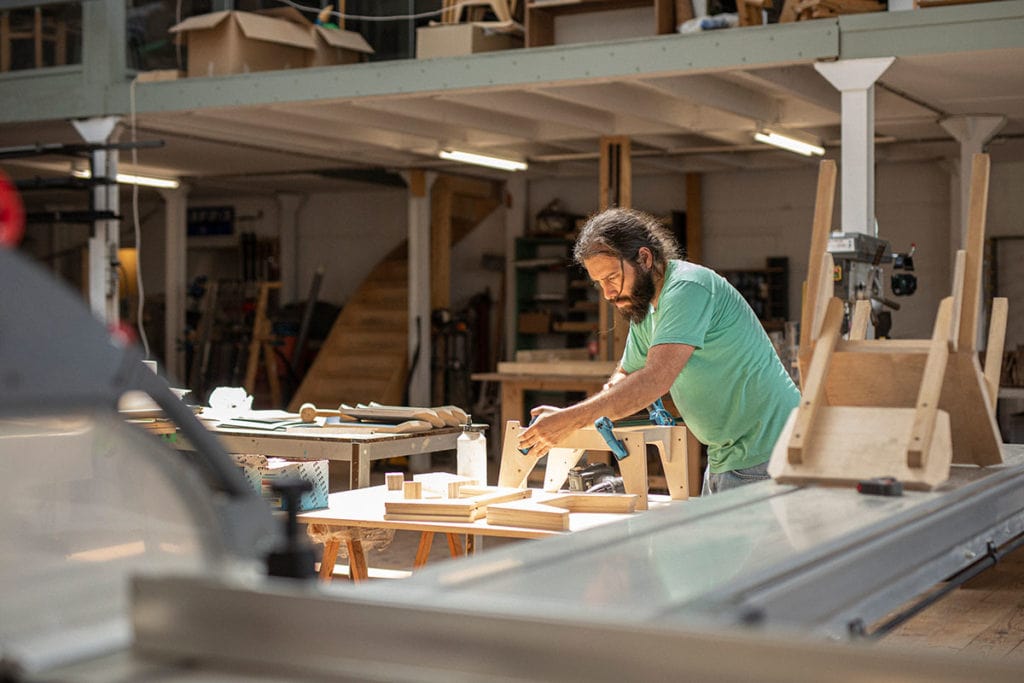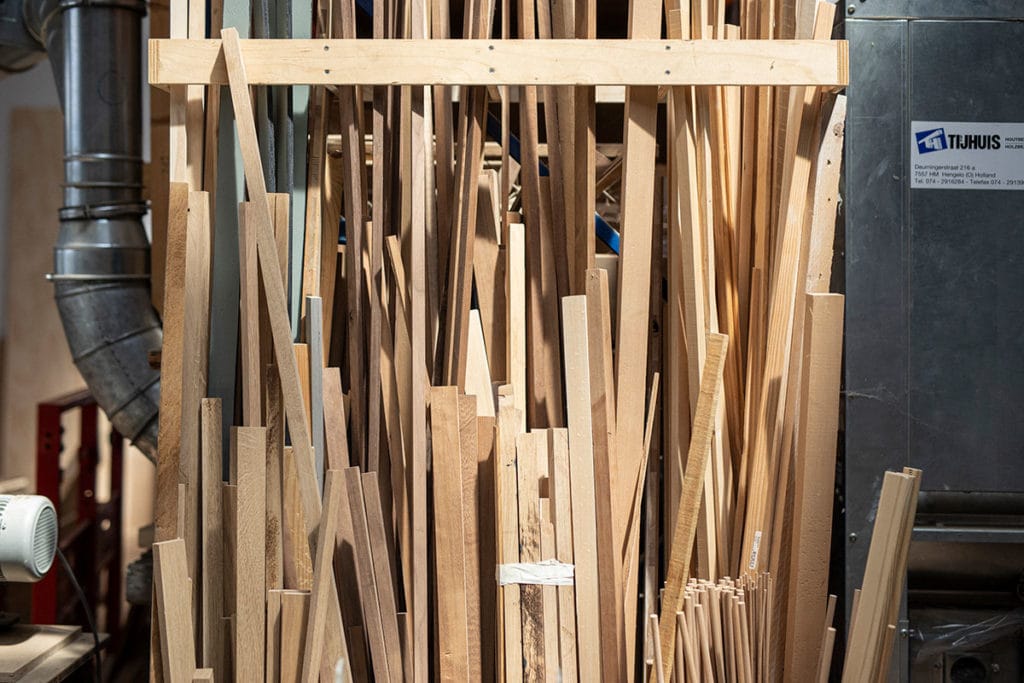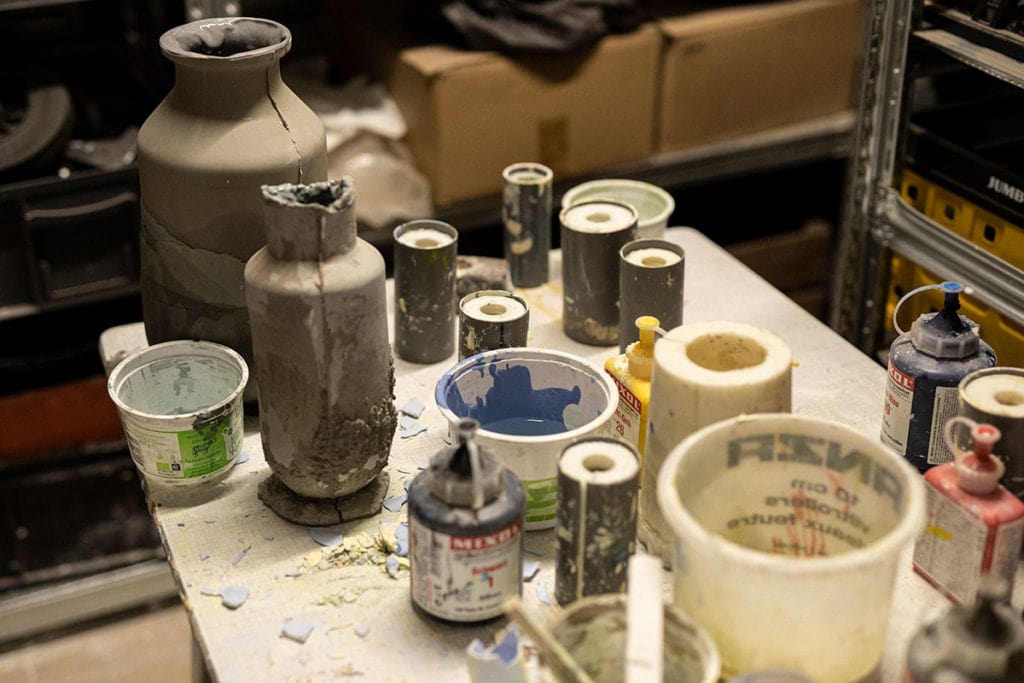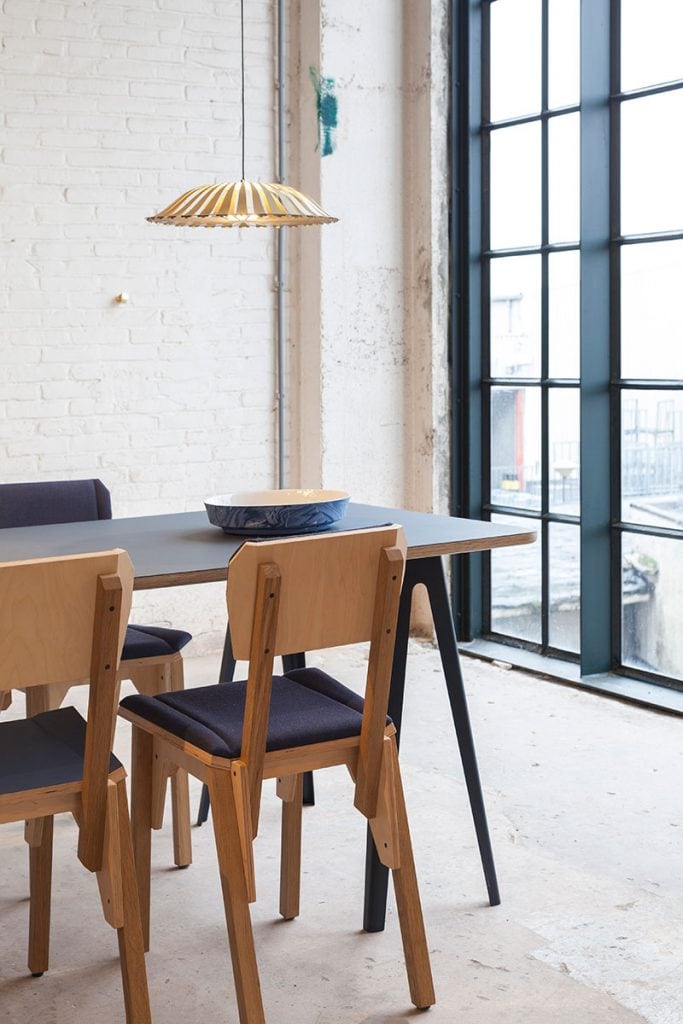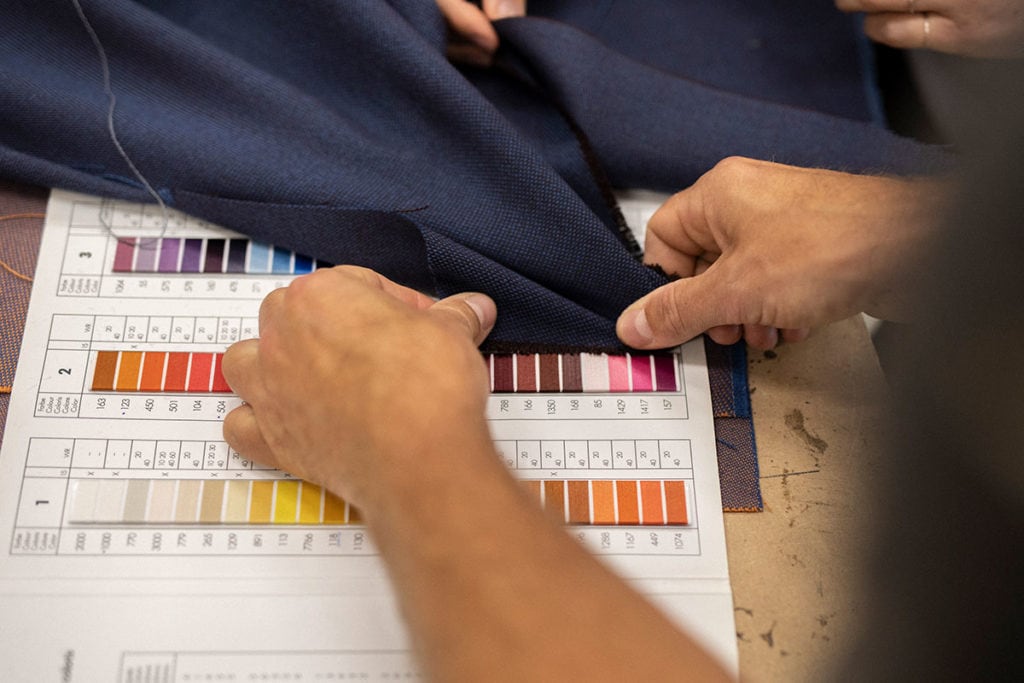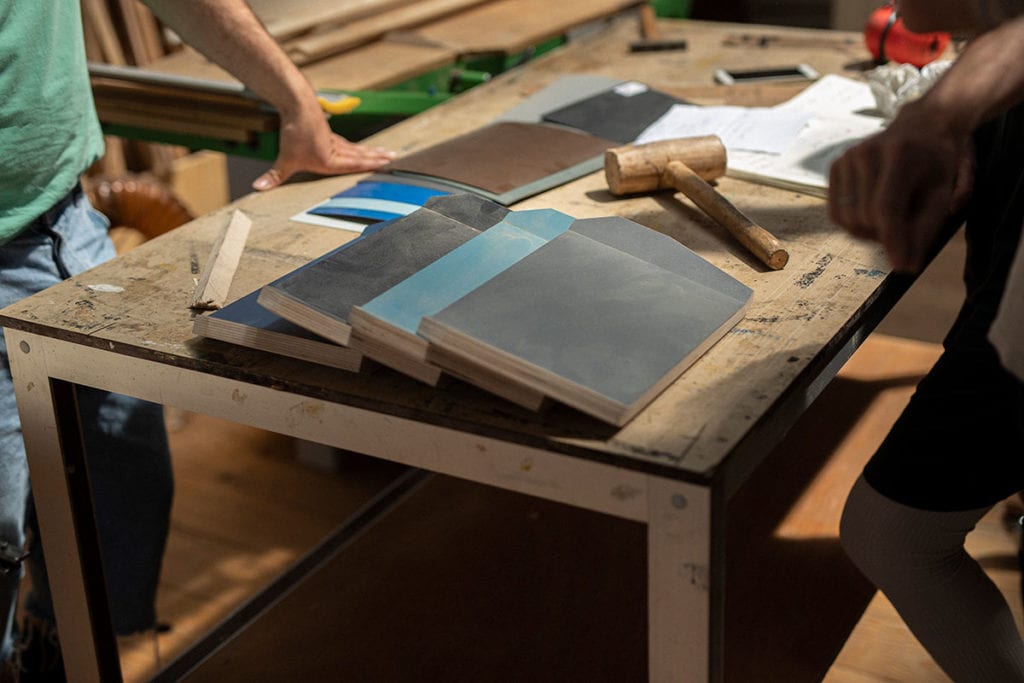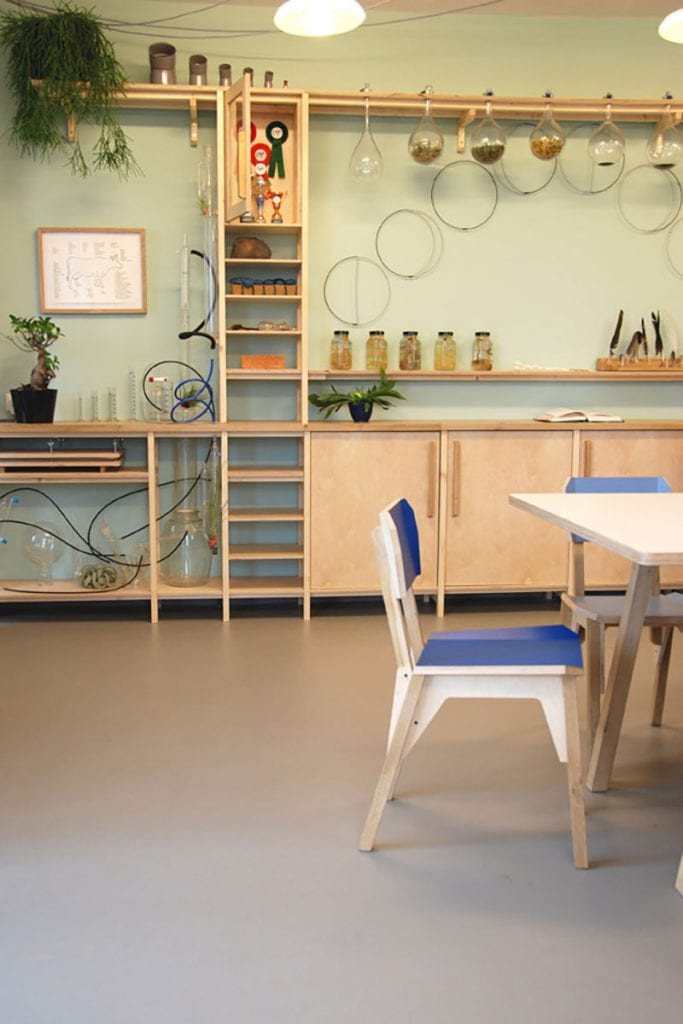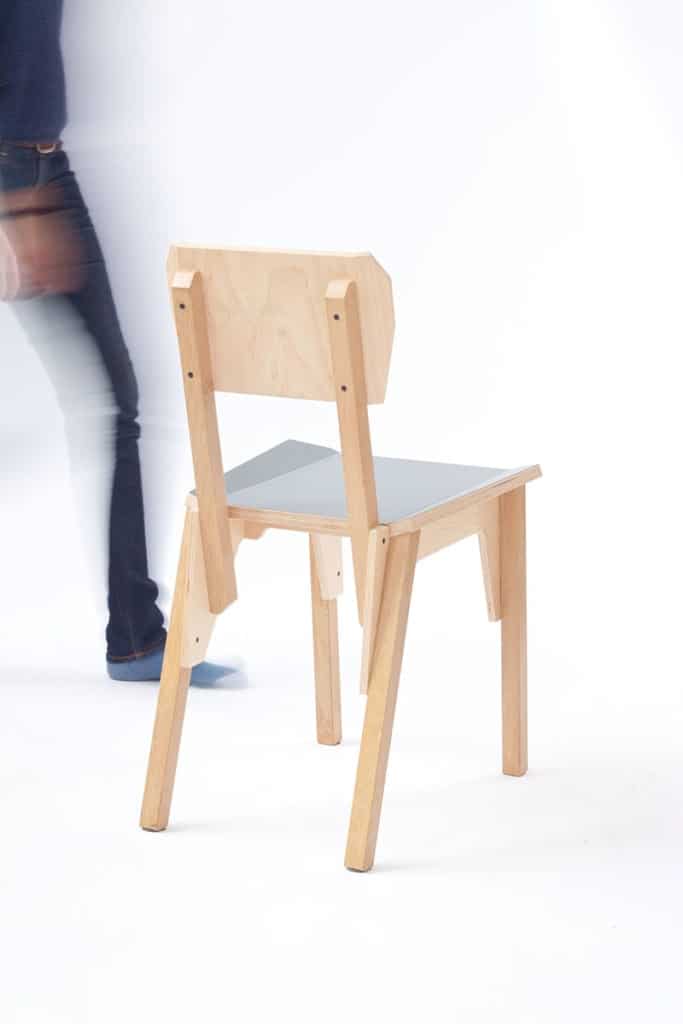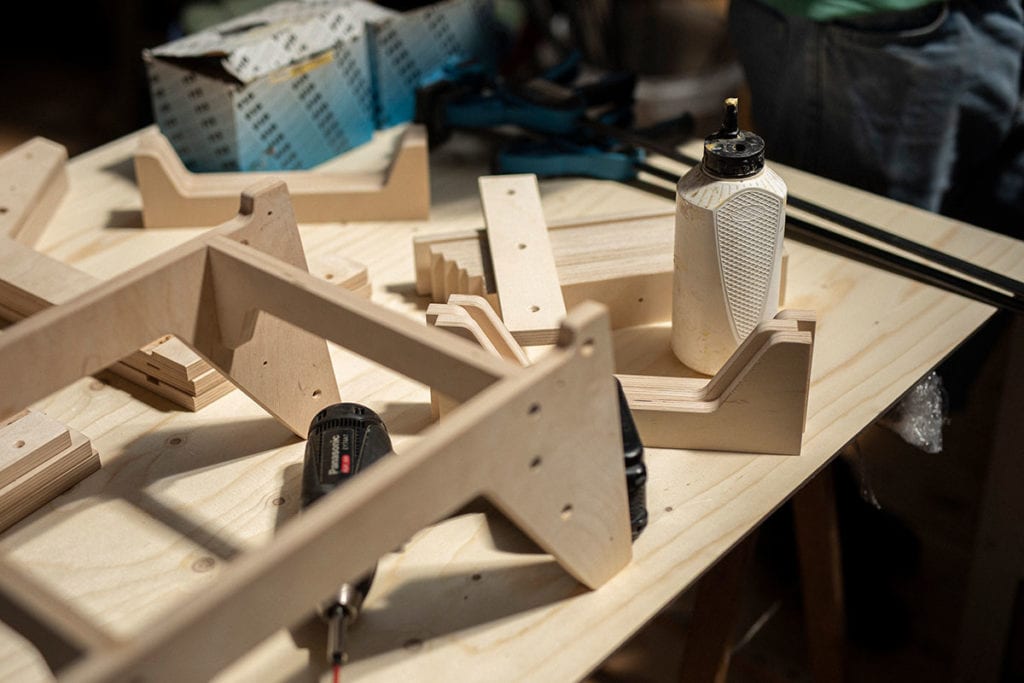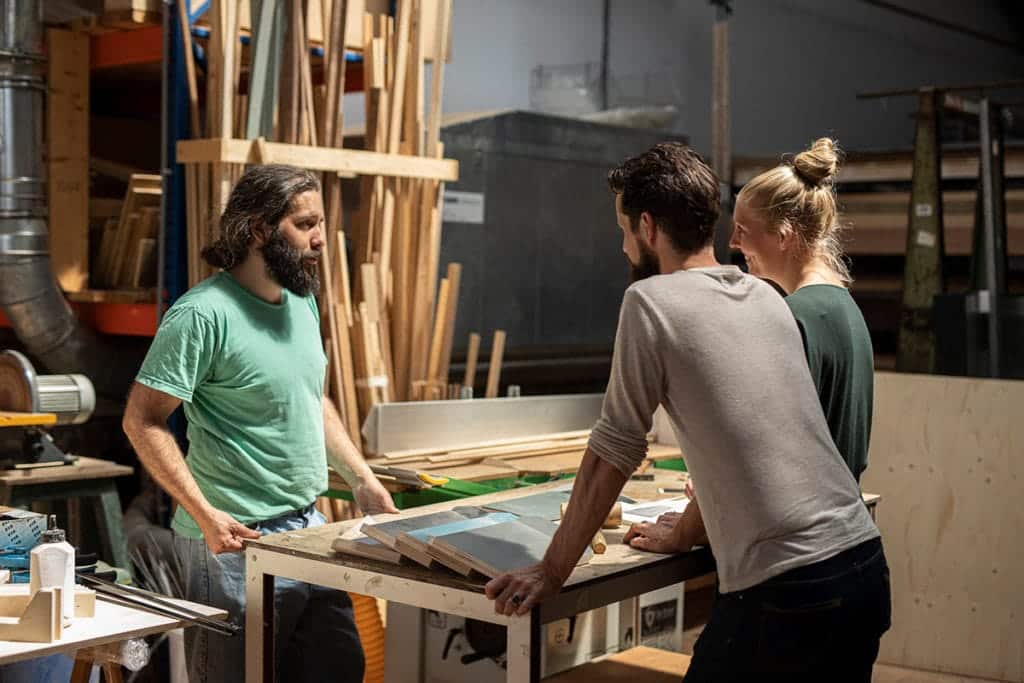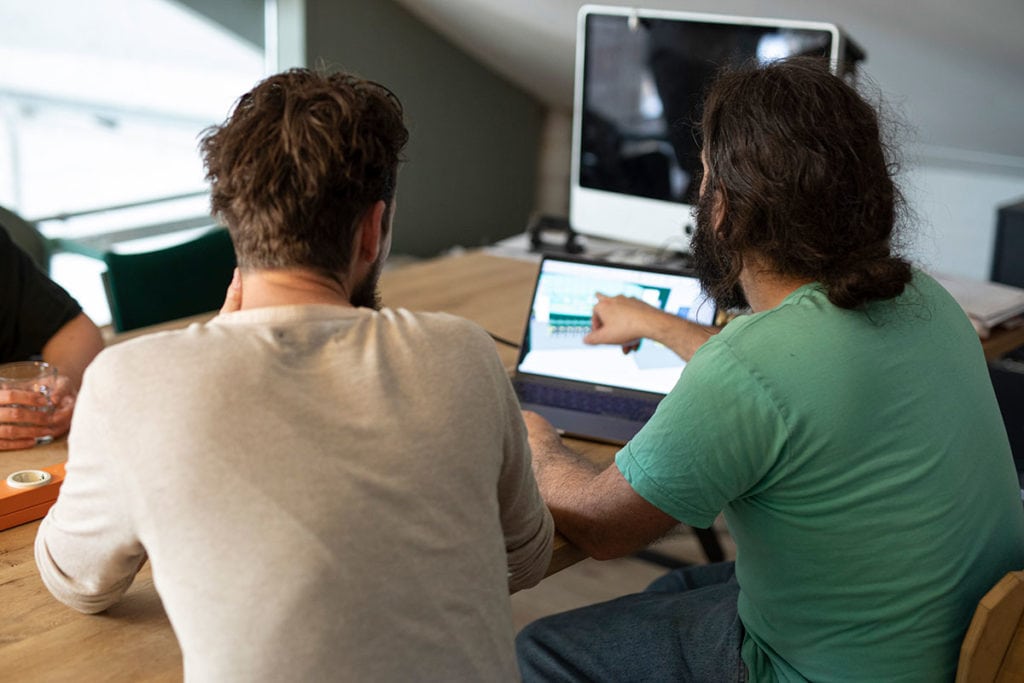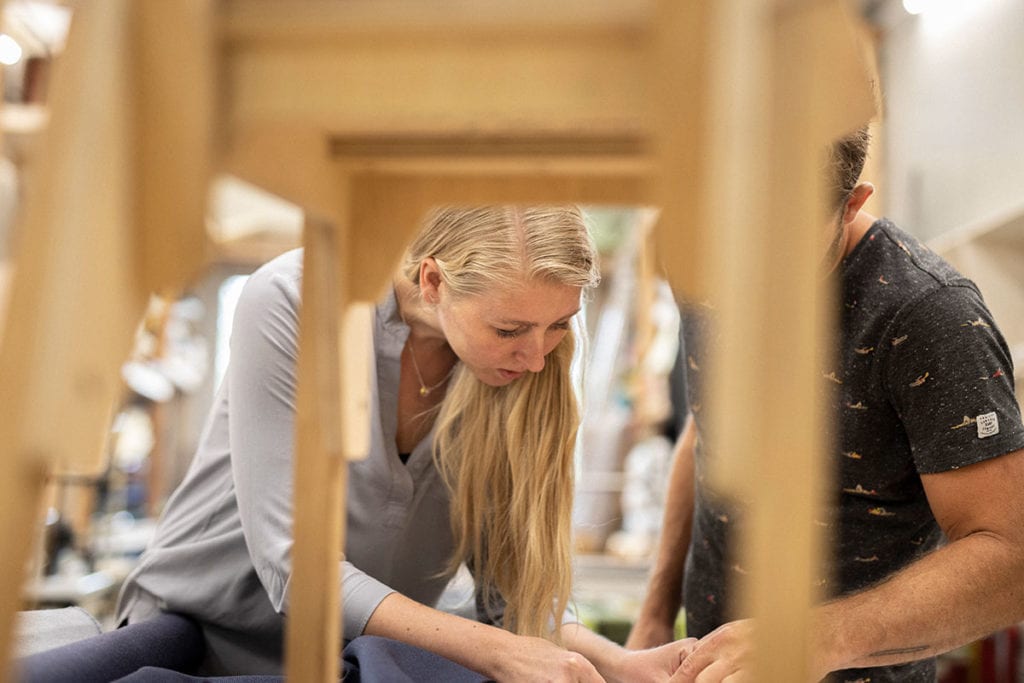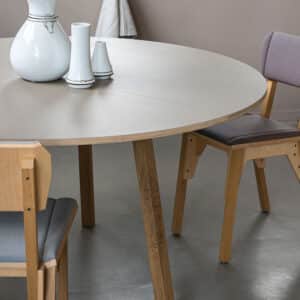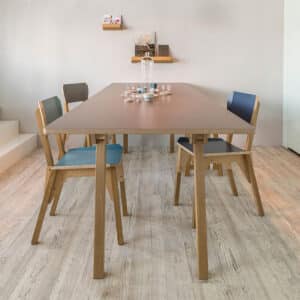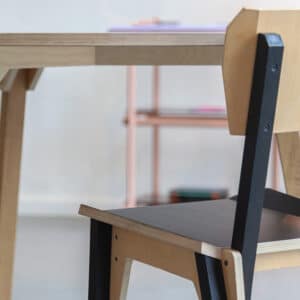As a child, product- and interior designer Jeroen Wand wanted to become Willie Wortel; in other words, an inventor. Looking at his career so far, he thinks he has succeeded quite well. His designs are innovative in the combination of material and technique. For many years his 's-Chair and 's-Table have been part of the Vij5 collection.
Text: Daniëlle van de Haterd(Staaldraad Tekstschrijver)
Photography: Vij5, Blickfanger & Studio Jeroen Wand
When Jeroen, originally from Limburg, applied to the Academy of Art and Design in Maastricht (NL) at the age of sixteen, he was advised to first make a world trip and then come back. After he handed over his -already at that time- impressive portfolio, this changed and he was allowed to start after all. 'I found these four years of training really exciting, it was a revelation. You could always find me at the academy because I just thought it was a really cool place.'
Paper chair as standard
The paper chair Jeroen graduated with was a great starting point for his design career. He still qualitatively tests his current designs against it. Yet after graduating, he immediately steamed on to a master's program at the Sandberg Institute in Amsterdam.
Trip to China
Sandberg was a special experience for Jeroen in many ways. 'What I remember most is the 3-week trip to China. That was a really intense and impressive experience. We were taken along to all kinds of production facilities, at one point also to a factory where children of about 14 or 15 years old were working on items that are in the stores here for one euro. That really came in, I realized how privileged we are in the Netherlands.'
“Just throwing something into the world because you can make money with it is really not okay.”
Jeroen Wand
Products with a right to exist
His experience in China made Jeroen resolve to only design and make stuff that actually has a right to exist. 'I have seen that people have to work in conditions that are not necessary to make things that are not necessary. Just throwing something out into the world because you can make money with it is really not okay with me.'
Studio in Eindhoven
Jeroen's roots are in Limburg, yet he has his studio in Eindhoven. That was not a conscious choice, but rather an outcome of fate that he is happy with. 'I studied and lived first in Maastricht and then in Amsterdam. Shortly after I finished my studies I had to move out of my anti-squat apartment. A friend of mine found a studio in Eindhoven, which was too big for him alone so he asked if I was interested. Somehow that felt logical because at the time I was working in Geldrop at van Eijk and van der Lubbe. So without a plan I settled in Eindhoven.'
High designer density
Although he can't imagine being there now, it took a while for Jeroen to feel at home in his new hometown. 'Eindhoven is of course the city of the Design Academy. I did my education somewhere else, so I had to do my best to fit in.' What Jeroen likes about Eindhoven is its high designer density. 'If there were as many bakers as Designers, they would all go bankrupt.' he jokes. 'But as designers we work all over the world, which is why it doesn't bite. On the contrary, there is a lot of togetherness, everyone borrows stuff from each other, for example.'
“In principle, my ideas should be promoted by the studio, but I might change my mind if someone has a better idea.”
Jeroen Wand
Reinventing the wheel
When Jeroen talks about his work, he talks about 'we'. His studio now consists of several employees who all love to invent the wheel ánd are very capable of executing a project from A to Z. The current generation of designs is therefore really work made by the studio. 'I always try to give a preliminary idea, everyone who works with me can then work it out and make it. I want my ideas to be carried out by the studio, but I may change my mind if someone has a better idea. At the bottom line, everything that comes out of the studio is my responsibility; I have to really stand behind the end result, of course.'
“Material is nothing without technique, and technique is nothing without material.”
Jeroen Wand
Three pillars
Jeroen's studio consists of three pillars. 'We have a collection of free work that we make in-house, a part where we work on commission, and a part where we do the executive work for other designers. This is a very nice combo because everything influences each other.'
Drive to discover something New
Jeroen has a great drive to constantly discover and create something new. Repetition of the same thing he finds boring. Studio Jeroen Wand's designs are characterized by surprising combinations of materials and techniques. 'During the design process, we do not have a concrete idea of what we are going to make; we let things emerge from an interest in materials or techniques. Material is nothing without technique and technique is nothing without material. Of course, we do make decisions in advance about which material or technique to apply, but both always leave a mark on the end result. I like this way of working because each time I am surprised by what happens.'
Sustainability is essential
Jeroen's design studio runs predominantly on commissioned work. That fits with his need to make only things that really matter and thus have a right to exist. Sustainability is not a theme for him, but a matter of course. 'The workshop runs on solar power and the veneer used for our products is a residual stream that would otherwise go into the stove. The glue we use has to be as environmentally friendly as possible, and I prefer to source wood locally. Sustainability is essential to me, but not necessarily something I want to propagate through my work.'
‘s-Chair and ‘s-Table
The ‘s-Chair and ‘s-Table were initially designed for the educational space of Design Museum Den Bosch (formerly Stedelijk Museum ’s-Hertogenbosch). The surprising combination of materials and the fact that the chair is stackable were well received, leading to larger-scale production.
Match with Vij5
Vij5 came into Jeroen's life because he worked in the same place as Arjan and Anieke years ago. A collaboration arose from being almost neighbors. ‘I had a good personal connection with them, and I appreciate their Vij5 collection. My chair and table fit perfectly in terms of look and feel’.
Strong chair
Basically, little to nothing has changed about Jeroen's products since they became part of the Vij5 collection. The production process is still 100% with him. ‘What we did do is have the chair approved. It turned out to meet NEN-EN 16139 level 2. That means the chairs are extremely strong for wooden Furniture. They can even be used in prisons and police stations.’
The collaboration
In the collaboration with Vij5, the knife cuts both ways. 'Arjan and Anieke are simply a bit better at sales than I am, that's what the collaboration brings me. On the other hand, in interior designs I also include items from the Vij5 collection, that's what it brings them.'
"I'm not an entrepreneur who wants to grow big at the expense of the atmosphere."
Jeroen Wand
View of the future
Jeroen is very happy with what he is doing now, so he has no plans to change tack in the future. 'What I have now works fantastic! The people who work for me do so because they want to. I realize that is quite a special situation. What we make is fun, the way we make it is fun, and everyone can use their own qualities. I facilitate that, my ambition is that it stays that way and that we can continue to make new discoveries. The way things are now has come about, if we continue to grow then I feel it should be organic, otherwise, it can't be done in my opinion. I'm not an entrepreneur who wants to grow big at the expense of the atmosphere. Then it makes no sense to me, I think it works very well right now. We have a cool place, with space for growth, but I don't need to be so big that we would have to take orders that we don't learn anything from. If we can grow the way we're working now, then we're fine.'
Products by Jeroen in the Vij5 collection
-
‘s-Table | round design dining table, plywood & solid oak legsPrijsklasse: € 1.890,00 tot € 2.690,00
In stock
-
's-Table | design rectangular dining table, plywood & solid oak legsPrijsklasse: € 1.890,00 tot € 2.490,00
In stock
-
's-Chair | stackable design dining room chair in solid oak, plywood and HPL, seat height 46cm€ 425,00
In stock


